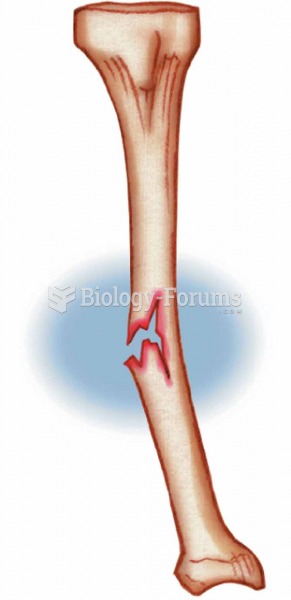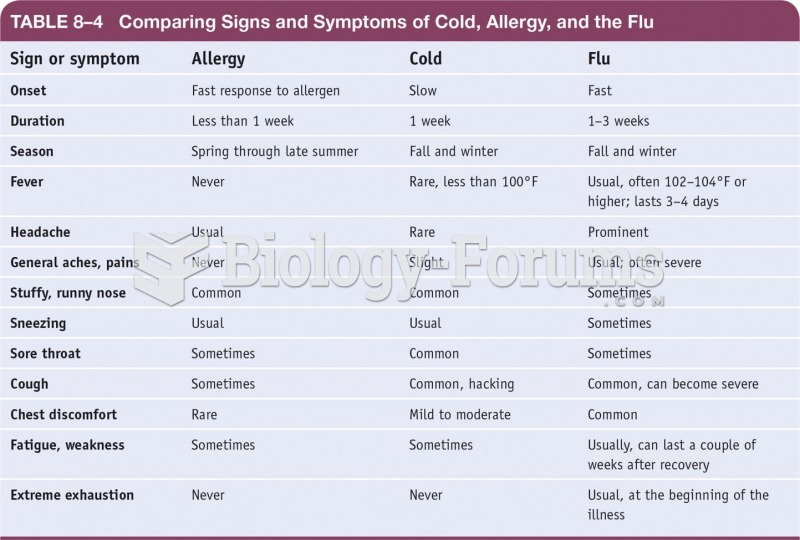|
|
|
Most fungi that pathogenically affect humans live in soil. If a person is not healthy, has an open wound, or is immunocompromised, a fungal infection can be very aggressive.
In 1844, Charles Goodyear obtained the first patent for a rubber condom.
The most common treatment options for addiction include psychotherapy, support groups, and individual counseling.
More than 2,500 barbiturates have been synthesized. At the height of their popularity, about 50 were marketed for human use.
People with alcoholism are at a much greater risk of malnutrition than are other people and usually exhibit low levels of most vitamins (especially folic acid). This is because alcohol often takes the place of 50% of their daily intake of calories, with little nutritional value contained in it.







